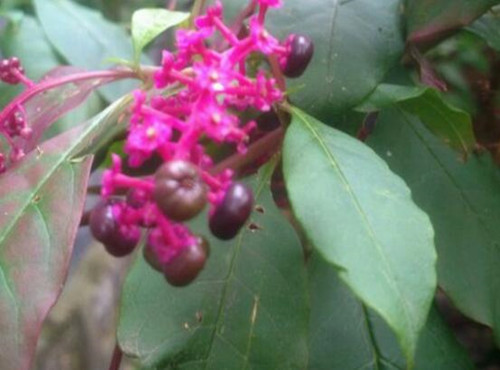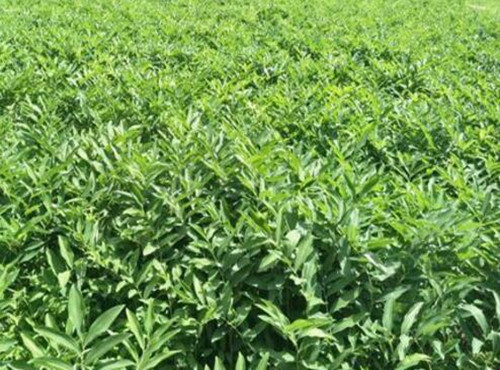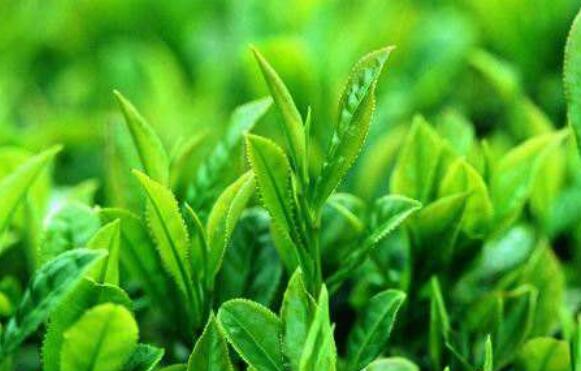How is pokeweed grown? How much is a catty? What is the efficacy and function?
Phytolacca is from southwest to northeast of China, and is also found in Korea, Japan and India. Its vitality is strong, often wild in the foot of the mountain, forest, roadside and before and behind the house, plains, hills and mountains are distributed. So, how to grow Phytolacca? How much is the root per jin? What is the efficacy and effect?

How to grow Phytolacca acinosa?
1. Field management: pokeweed is watered twice after setting seedlings or during severe drought, and when soil moisture is suitable, the soil is loosened and weeded shallowly, keeping the soil surface sparse orange, moist and weed-free. Shang Lu blossoms from June to August, except for those who keep the seed, cut off all the flower moss and reduce the nutrient consumption. In order to make Phytolacca survive the winter safely and increase the fertilizer of organic matter in the soil, 6000 kg / ha of chopped firewood grass such as wheat and rice bran were sprinkled in the fields planted in late autumn and early winter.
2. Reasonable topdressing: the leaves of Phytolacca acinosa seedlings are sprayed with 0.5% urea solution, a small amount for many times, with a total amount of no more than 225 kg / ha. In the next spring, before the plant emerged, a shallow trench was opened between the two rows and about 1200 kg / ha of potassium sulfate higher education compound fertilizer was applied. From July to August, spray 1% potassium sulfate or 0.3% potassium dihydrogen phosphate about 1800 kg / ha, once every 15 days, 3 times in a row.
3. Disease and pest control: there is no disease in the whole growth period of Phytolacca. Because the stems and leaves are tender, the main pests are aphids. 40% gram aphid 600 times liquid, 25% aldicarb 1000 times liquid can be used for 3 times and 2 times respectively, and the safe interval is 7 days. Sometimes there will be the harm of root rot, the aboveground parts of the damaged plants wither, the rhizomes turn brown, and when the roots rot seriously. Select good drainage plots for planting, timely drainage in the rainy season, and disinfect the soil with 70% pentachloronitrobenzene (15 kg / ha).
How much is Phytolacca root per jin?
It is understood that the price of Phytolacca root is more than ten yuan per jin, and the prices of different varieties in different regions will change.
What is the efficacy and function of Phytolacca?
1. Phytolacca acinosa is used as green manure in fertile fields, and its fertilizer effect is very remarkable. Fresh stems and leaves generally contain 2% nitrogen, 0.3% phosphorus, 0.6% potassium, 2% potassium, and 9% dry matter. 31%. The production practice in many places has proved that the fertilizer effect of using Phytolacca stems and leaves as green manure is better than that of other grass and green leaves, not only because of its high fertilizer content, but also because its stems and leaves are delicate and easy to decompose, so it is easy to be absorbed and utilized by crops.
two。 Phytolacca had obvious enrichment of manganese, and the content of manganese in leaves was as high as 19299mg/kg. This discovery provides an economical and effective method for the treatment of manganese pollution.
3. There are two kinds of Phytolacca, the purplish red stem is poisonous and can not be eaten, and the green stem Phytolacca seedlings is a kind of high quality wild forest vegetable. Some of the fallen leaves on Shang land generally withered in autumn and winter and sprouted in the spring of the second year, which is a first-class wild vegetable variety. Because Phytolacca acinosa is a perennial herb, once planted, it can be harvested for many years, and the spring yield per 667m2 is more than 2t.
4. Phytolacca has a good effect of water and soil conservation, especially suitable for newly reclaimed red soil terraced orchards.
Time: 2019-03-21 Click:
- Prev

How much is the traditional Chinese medicine Polygonatum odoratum per jin? How to plant it? What are the efficacy and function taboos?
Polygonatum odoratum, the name of traditional Chinese medicine. It is the dried rhizome of Polygonatum odoratum (Liliaceae). Distributed in Heilongjiang, Jilin, Liaoning, Hebei, Shanxi, Inner Mongolia, Gansu, Qinghai, Shandong, Henan, Hubei, Hunan and other places. So, how much is the traditional Chinese medicine Polygonatum odoratum per jin? How to plant it? What are the efficacy and function taboos?
- Next

What does Xihu Longjing Tea tea tree look like? How much is the seedling price? Can you make bonsai? (with cultivation points)
Xihu Longjing Tea, a green tea, is one of the top ten famous teas in China. It is produced in the mountains around Longjing Village, Xihu Lake, Hangzhou City, Zhejiang Province, hence its name. So what does Xihu Longjing Tea tea tree look like? How much is the seedling price? Can you make bonsai? I learned from the seedling base in Shuyang County.
Related
- Fuxing push coffee new agricultural production and marketing class: lack of small-scale processing plants
- Jujube rice field leisure farm deep ploughing Yilan for five years to create a space for organic food and play
- Nongyu Farm-A trial of organic papaya for brave women with advanced technology
- Four points for attention in the prevention and control of diseases and insect pests of edible fungi
- How to add nutrient solution to Edible Fungi
- Is there any good way to control edible fungus mites?
- Open Inoculation Technology of Edible Fungi
- Is there any clever way to use fertilizer for edible fungus in winter?
- What agents are used to kill the pathogens of edible fungi in the mushroom shed?
- Rapid drying of Edible Fungi

